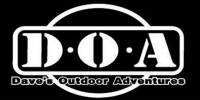|
|
|
|
|
|
|||||||||||||||||||||||||||||||||||||||||||
|
Four forces affect an aircraft in flight. Those forces are lift, weight, thrust, and drag. Lift opposes weight and thrust opposes drag. Lift is the upward force on an aircraft. There are two types of lift, airfoil or Bernoulliís lift and dynamic lift. Airfoil/Bernoulliís lift is created by air flowing across an airfoil. The curvature of an airfoilís upper surface makes the air flowing across it move faster than the air moving under the wing. The increase in velocity reduces the pressure on the top of the wing, creating a relatively high pressure below the wing compared with relatively low pressure above the wing, which produces lift. Bernoulliís lift is the major form of lift for flight. The other type of lift is Dynamic lift. Dynamic lift is created by the pressure of impact of air against the lower surface of the airfoil. Weight is the opposing force to lift. It is the downward force on an aircraft. Weight is the natural gravitational pull of the Earth on a body. Lift must be greater than weight to achieve flight. If weight becomes greater than lift during flight, the aircraft will begin to descend. The rate of descent depends on the difference between lift and gravity. Thrust is the force that gives an aircraft its forward motion. It is usually created by a power source that either pulls or pushes the aircraft forward. Thrust opposes drag. Drag is the opposite force of thrust. It is the force that slows the forward motion of the aircraft. There are two types of drag, induced and parasitic. Induced drag can be further broken down into dynamic induced drag (Newtonian) and pressure induced drag (Bernoulli). Dynamic induced drag is associated with dynamic lift. The air impacting the bottom of a wing pushes back as well as up, creating drag. Pressure induced drag is caused when the angle of attack becomes high enough that the airflow across the airfoil is no longer smooth and the airflow becomes turbulent as it breaks away from the wing. Turbulence and pressure drag also result from the flow of air around the wig tip as the relatively high pressure air under the wing flows over the wing tip to the low pressure area on top of the wing. The second type of drag, parasitic drag, is caused by the friction between the outer surfaces of the aircraft and the air through which it moves. In summary, for an aircraft to fly, it must deal with the opposing forces of lift verses weight and thrust verses drag. During take off, lift must be greater than weight and thrust must be greater than drag. During level flight at a constant speed, lift equals weight and thrust equals drag. To land, thrust must be less than drag and lift less than weight.
|
